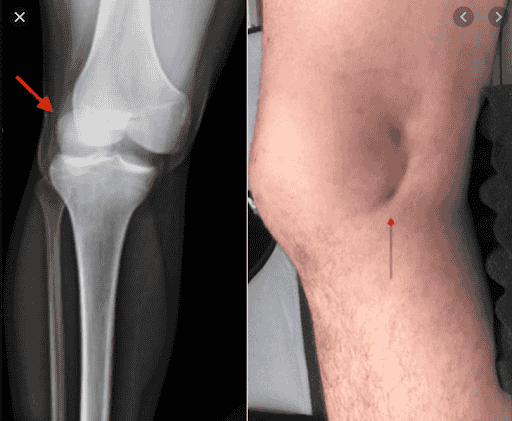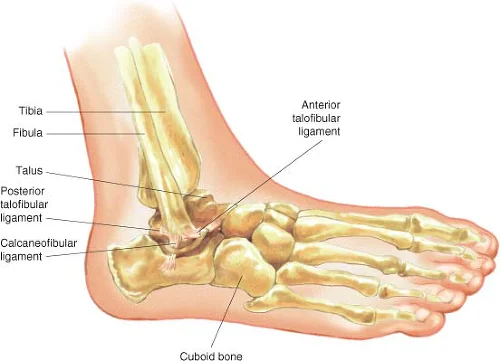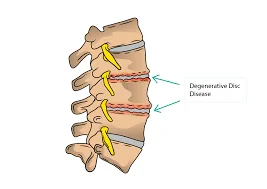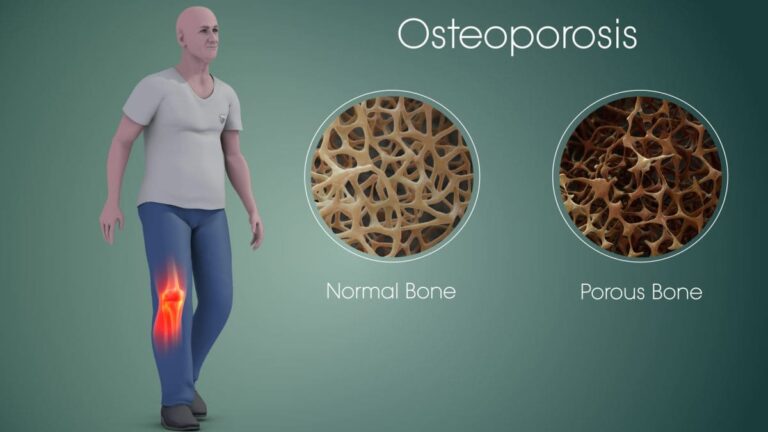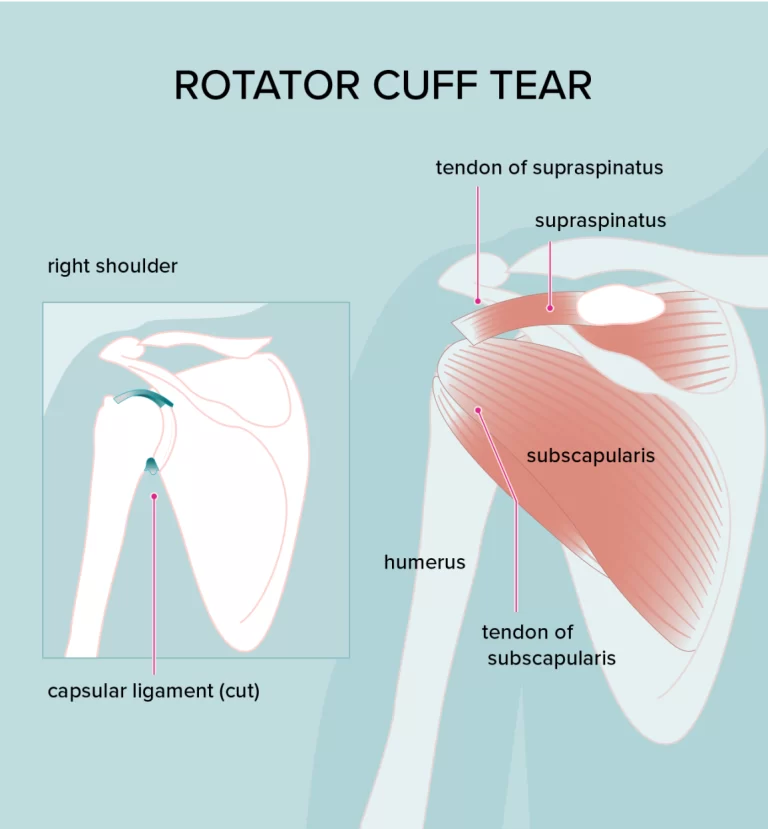Morbid Obesity
Morbid Obesity: What is it?
Morbid obesity is defined as a body mass index (BMI) of 35 or greater. It is also called class III obesity. BMI is used to calculate body fat and can help you evaluate whether you are at a healthy weight for your size. BMI is not a perfect measurement, but it does provide an overall notion of appropriate weight ranges for height.
What are the causes of morbid obesity?
When you eat, your body uses the calories you take in to function. Even at rest, the body requires energy to pump blood or digest meals. If those calories are not expended, the body stores them as fat. If you continue to consume more calories than your body can burn through everyday activities and exercise, your body will accumulate fat stores. Obesity and morbid obesity are the outcome of excessive fat storage in your body.
Certain drugs, such as antidepressants, might lead to weight gain. Medical diseases such as hypothyroidism can cause weight gain, although they are usually manageable so that obesity does not develop.
Obesity can be caused by a variety of circumstances.
Genetic factors: Several studies have found that obesity can run in families and that multiple genes are linked to weight growth.
Hormone imbalances: Your body produces hundreds of hormones, each of which serves a unique and crucial role. Many of these hormones can influence how your body signals when you need food and how it uses energy. Cortisol, often known as the stress hormone, accelerates fat and carbohydrate metabolism, increasing energy levels. While this mechanism is necessary for survival (fight-or-flight), it also stimulates your hunger.
Chronic stress can raise your cortisol levels and increase your hunger and desire for sweet, fatty, and salty foods, resulting in weight gain. Another example is having low thyroid hormone levels (hypothyroidism). Thyroid hormone is required to keep your body’s metabolism functioning properly. Low thyroid hormone levels might reduce your metabolism and induce weight gain.
Socioeconomic and geographical factors: Having a low socioeconomic position, as well as easier financial and/or geographical access to unhealthy fast foods versus healthier whole foods, can all contribute to obesity. Obesity can also be exacerbated by limited access to recreational facilities or parks, as well as a lack of safe or simple walking routes in your neighborhood.
Cultural factors: The prevalence of calorie-dense food marketing and advertising, as well as larger portion sizes, can all contribute to obesity.
Environmental factors: Chemicals known as obesogens can alter your hormones and increase adipose tissue in your body.
Why was Class III obesity referred to as morbid obesity?
The term “morbid obesity” was coined by two healthcare experts in 1963 to justify insurance reimbursement for the expense of intestinal bypass surgery for weight loss in persons with a BMI greater than 40.
Healthcare practitioners frequently use the word “comorbidity,” which refers to an individual having multiple illnesses or diseases at the same time. The medical term “morbid” is appropriate for defining this type of obesity because class III obesity is considered a disease and is frequently connected with other chronic health issues.
The problem is that, like many terms, “morbid” has multiple meanings. Outside of the medical context, “morbid” indicates unsettling or unpleasant. Because most people are unfamiliar with the medical terminology, they linked morbid (class III) obesity and obese persons to those bad terms. The usage of the term “morbid” to describe obesity contributes to a misleading and detrimental societal stigma that implies that persons with obesity lack the willpower to lose weight, which is virtually never the case.
Healthcare practitioners, researchers, and health organizations, including the World Health Organisation (WHO), now refer to “class III obesity” rather than “morbid obesity.”
Health hazards associated with class III obesity:
Obesity complications may include the following:
Metabolic syndrome comprises type 2 diabetes, high blood pressure, and other characteristics.
- High levels of triglyceride
- stroke
- Heart illness.
- Gallbladder Disease
- osteoarthritis
- Sleep apnoea and other respiratory disorders
- Depression and anxiety are two examples of mental health disorders.
- Some cancers
- Symptoms include physical pain, trouble with regular activities, and an increased risk.
Who is affected by Class III obesity?
Everyone, including children and adults, can develop class III obesity. However, due to its complexities, class III obesity affects people in different ways. According to a study on the prevalence (commonness) of class III obesity in adults in the United States from 2017 to 2018, here’s how class III obesity affects different people:
Sex: About 11.5% of females have class III obesity, compared to 6.9% of males.
Age: Class III obesity affects 11.5% of individuals aged 40 to 59, 9.1% of adults aged 20 to 39, and 5.8% of those aged 60 or more.
Race: Non-Hispanic Black people had the highest prevalence of class III obesity (13.8%), while non-Hispanic Asian adults had the lowest (2.0%).
Diagnosing morbid obesity:
Your doctor will do a medical examination and enquire about your weight history and weight loss initiatives. They’ll ask about your food and exercise routines, as well as your medical history.
To find your BMI, divide your height in meters squared by your weight in kilograms. You may calculate your BMI using a calculator. The Centres for Disease Control and Prevention give a credible source.
Here are the BMI ranges and accompanying classifications of obesity:
Underweight: <18.5 percent; normal: 18.5 to 24.9 percent; overweight: 25.0 to 29.9 percent; obese (class 1): 30.0 and 34.9 percent; and severe obesity (class 2): 35-39.9 percent.
There are limits to using BMI as a diagnostic tool for obesity. Your BMI is simply an estimation of your body fat. Athletes, for example, may be overweight due to their increased muscle mass. They may have a BMI that indicates obesity or severe obesity, but they have a tiny quantity of body fat. As a result, your doctor may conduct additional tests to obtain an accurate assessment of your body fat percentage.
Calculate Body Fat Percentage
A skinfold test may also be used to determine your body fat percentage. A doctor uses a caliper to measure the thickness of a fold of skin on the arm, belly, or thigh. Bioelectrical impedance testing is another method for determining body fat percentage, which is commonly performed using a special type of scale. Finally, body fat can be quantified more precisely using specialized equipment that calculates water or air displacement.
Other Tests
Healthcare practitioners may perform specific laboratory tests to check your health and determine whether you have any health disorders that could be causing weight gain and/or are strongly connected with class III obesity. These tests can include:
- Complete the blood count.
- A basic metabolic panel.
- Kidney (renal) function testing.
- Liver function testing.
- Lipid panel.
- HbA1C (hemoglobin A1C).
- TThyroid-stimulating hormone (TSH) test.
- Vitamin D level test.
- Urinalysis.
- C-reactive protein (CRP) testing.
Providers may also offer further tests, such as an electrocardiogram (EKG) to assess your heart health and sleep studies.
Management and Treatment of Morbid Obesity:
There are various treatments available for morbid obesity.
Healthy lifestyle changes:
Certain lifestyle modifications can help you manage obesity, enhance your overall health, and/or reduce weight, including:
Heart-healthy eating: Your healthcare practitioner may recommend that you consult with a licensed dietitian or nutritionist to learn about the foods and quantities that are part of a healthy eating pattern. If you’re trying to lose weight, you should progressively cut your total daily calories. Before making any dramatic dietary changes, consult your provider.
Physical activity has numerous health benefits, and it plays a significant role in deciding whether a person can maintain a healthy body weight, shed excess body weight, or maintain healthy weight reduction. Before beginning any exercise program, consult your healthcare physician about the amount and type of physical activity that is appropriate for you.
Healthy sleep: If you are not receiving enough sleep or have a sleep disorder, it is critical to resume healthy sleep and/or seek treatment for sleep disorders to manage obesity.
Stress management: Chronic stress can contribute to weight gain, therefore it’s critical to learn to handle stress healthily, such as through meditation or breathing exercises, and to reduce it as much as possible.
Behavioral and Psychological Therapy:
To manage obesity, your healthcare physician may prescribe that you participate in individual or group behavioral weight-loss programs. In these programs, a properly educated healthcare provider will create a personalized weight-loss plan for you.
Obese people are more likely to experience mood disorders like despair and anxiety. As a result, if you have a mental health condition, your provider may suggest psychological therapy.
Obesity can be treated using several behavioral and psychological interventions, including:
Motivational interviewing is a method of treatment that promotes behavior change. It is intended to empower you to change by allowing you to define your purpose, importance, and potential for change.
Cognitive behavioral therapy (CBT) is a type of therapy in which a therapist or psychologist helps you transform detrimental or unhelpful thinking and behavioral habits. CBT normally consists of several sessions. Your therapist or psychologist can help you develop a new perspective by talking and asking questions. As a result, you develop stronger responses to and coping strategies for stress, anxiety, and tough situations.
Dialectical behavioral therapy (DBT) is a kind of CBT. It can be beneficial if you struggle with emotional regulation or engage in self-destructive behaviors, such as disordered eating patterns.
Interpersonal psychotherapy (IPT) aims to improve the quality of your interpersonal interactions (relationships with others) and social functioning to alleviate stress.
Medication:
There are several weight loss drugs available to treat severe obesity. Doctors now have a variety of prescription drugs available to help control this medical issue. This includes:
Semaglutide (Wegovy): an injectable that reduces glucagon and works by helping the pancreas release the proper amount of insulin when blood sugar levels are high, allowing sugar to be used for energy.
Liraglutide (Saxenda) is an injectable drug that, like semaglutide, operates by increasing the release of insulin from the pancreas while lowering excessive glucagon secretion.
Setmelanotide (IMCIVREE) is an injectable drug used for weight management in persons with specific genetic disorders.
Phentermine-topiramate (Qsymia): an appetite suppressant medication for the short-term treatment of obesity.
Orlistat (Xenical) is an oral drug that blocks the enzyme that breaks down fats in your food, causing fats to flow through the body in a bowel movement.
Bupropion-naltrexone (Contrave) is a fixed-dose combination medicine that treats chronic obesity.
Surgical alternatives.
If dietary changes, lifestyle adjustments, and medications do not work, a doctor may suggest surgery. Some of these techniques are:
In gastric banding, a surgeon inserts a ring around the stomach, reducing the amount of food that can enter.
Gastric bypass seeks to boost the sense of fullness and lead to the absorption of fewer calories.
Sleeve gastrectomy, in which the surgeon eliminates a portion of the stomach
An intragastric balloon is a temporary procedure in which the surgeon implants a balloon in the stomach to take up space.
If someone loses a lot of weight, they may develop undesirable skin folds. Surgery can also help with this.
Risk Factors of Morbid Obesity:
Certain factors can influence the chance of developing any type of obesity.
- A person’s energy levels can be affected by their dietary habits and degree of activity.
- Socioeconomic factors can limit access to fresh food and the ability to exercise.
- Obesity may be influenced by genetics.
- Family history may influence both genetic and environmental factors.
- Obesity is associated with some medical problems, such as Cushing’s disease and polycystic ovarian syndrome.
- Stress and worry can raise levels. A trusted source of cortisol, a hormone that can influence fat storage and weight growth.
- A lack of sleep could be a contributing factor.
Do social factors influence the risk of obesity?
According to a 2017 assessment of studies from throughout the world, the following societal factors, among others, may play a role:
Factors that may impact a person’s health and diet include trauma, relationship problems, financial difficulties, workplace settings, access to healthy food, and urban living and activity levels.
Prevention of Morbid Obesity:
There is no single strategy to lose weight or avoid weight gain. The ideal option will vary depending on the individual. However, dietary changes and exercise can help.
Dietary suggestions may include:
Consume fresh fruits and vegetables and prefer entire, unprocessed foods.
To improve health, eliminate trans and saturated fats and replace them with healthy fats like safflower or maize oils. Also, restrict sugar and sweetened foods.
To check caloric consumption, use a smaller plate as recommended by a healthcare practitioner.
Eat more slowly. To prevent overeating, eliminate triggers and routines like eating cake with coffee during breaks.
Current standards recommend that adults engage in at least 150 minutes of moderate-intensity activity per week. Activities like cycling, swimming, and walking may fall under this category. It could include 10-minute sessions multiple times each day, most days of the week.
A medical professional can advise on how much in addition to what type of exercise a person should engage in, based on their overall health, age, and other considerations.
What is the prognosis for class III obesity?
If untreated, class III obesity can reduce life expectancy by up to 14 years. In addition to contributing to potentially major health concerns, class III obesity is linked to fewer economic and social prospects and a lower quality of life.
It is possible to manage class III obesity while improving health outcomes. According to research, some obese patients who take prescription weight-management drugs lose 10% or more of their starting weight.
According to studies on bariatric surgery outcomes, persons who undergo the procedure may lose 30% to 50% of their extra weight in the first six months, and 77% of their excess weight 12 months or more afterward. Another study found that persons who underwent bariatric surgery might sustain a 50% to 60% weight decrease for 10 to 14 years afterward.
It can be difficult and intimidating to try to reduce weight and change your living choices. If you have class III obesity, remember that losing 5% to 10% of your beginning weight can greatly improve your health by lowering blood sugar (glucose), blood pressure, and lipid levels.
Which class III obesity complications exist?
Class III obesity is a dangerous medical condition that can lead to the emergence of several other illnesses, such as:
Metabolic syndrome: A person is said to have metabolic syndrome if they have at least three of the following conditions: high blood pressure, elevated fasting blood glucose (blood sugar) levels, low HDL cholesterol, high triglyceride (TG) levels, and central obesity.
Type 2 diabetes: Insulin resistance caused by excessive fat buildup might result in type 2 diabetes (T2D). For every unit increase in BMI, the chance of acquiring type 2 diabetes rises by 20%. The development of T2D is influenced by numerous different factors. Not everyone with T2D is obese, and not everyone with obesity has T2D.
Heart disease: Long-term obesity exposure deteriorates cardiac (heart) function and causes heart disease. Larger ventricular mass, systolic dysfunction (impaired ventricular contraction), and atrial fibrillation (a quivering or irregular heartbeat) are all consequences of obesity.
High blood pressure, often known as hypertension, is 3.5 times more common in obese people, which raises the risk of heart disease.
Atherosclerosis: Obesity is a risk factor for atherosclerosis, which is accelerated by other obesity-related health issues such as high blood pressure, increased glucose, and systemic inflammation. Atherosclerosis is the accumulation of plaque inside your arteries.
Some cancers: Thirteen different forms of cancer are linked to obesity. About 40% of all cancers diagnosed in the US in 2014 were these types of tumors.
Obstructive sleep apnoea is one type of sleep disorder. Obesity and obstructive sleep apnoea, which occurs when you repeatedly stop breathing while you’re asleep, are related. Obesity causes the airway to constrict due to fat deposits in the upper respiratory tract, which reduces muscle activity in this region and causes sleep apnoea and breathing problems.
Breathing problems: Some obese people have a breathing condition called obesity hypoventilation syndrome (OHS). Your blood contains too little oxygen and too much carbon dioxide as a result of the illness. It can result in severe and potentially fatal health issues if treatment is not received.
Osteoarthritis: Being overweight puts additional strain on your knees and other joints. This increases your risk of developing osteoarthritis (OA), a degenerative joint disease, or exacerbates existing conditions.
Depression: About 43% of individuals who suffer from depression are also obese, and those who are obese are 55% more likely to have depression in their lifetime than those who are not obese.
Summary
Although severe obesity is not a disease, it can raise the risk of many different illnesses, some of which can be fatal. Severe obesity may usually be reversed.
Anyone worried about obesity or any of its potential signs should consult a doctor. A person may be able to change their weight with treatments, which may also help avoid potentially dangerous consequences.
FAQs
At what weight level is someone deemed morbidly obese?
If an individual weighs more than 80 to 100 pounds over their optimal body weight, they are typically classified as grossly obese. A person is considered morbidly obese and a potential candidate for bariatric surgery if their BMI is greater than 40.
What distinguishes obesity from morbid obesity?
If your body mass index (BMI) is more than 30, you are considered obese, meaning you have too much body fat. Your weight about height are measured by your BMI. Being over 100 pounds overweight or having a BMI of 40 or greater are common definitions of morbid obesity, often known as “clinically severe obesity.”
What weight is considered morbidly obese?
BMI is calculated by dividing a person’s height (in meters) by their weight (kg).². If an adult’s BMI is between 25 and 29.9 kg/m2, they are termed overweight; if it is 30 kg/m² or above, they are called obese. A person is deemed morbidly obese if their BMI is 40 kg/m² or over.
Is 35 a dangerously obese BMI?
A patient must have a body mass index, or BMI, of 35–39.9 with one or more serious medical issues, or a BMI of 40 or higher, to be classified as clinically severe, or morbidly obese.
Is it possible to cure morbid obesity?
Class III obesity can be treated to enhance health results. According to research, some obese patients who take prescription weight-loss drugs reduce their initial weight by 10% or more.
Which three phases of obesity are there?
A BMI between 25.0 and 29.9 indicates overweight (but not obese). Class 1 (low-risk) obesity corresponds to a BMI between 30.0 and 34.9. Class 2 (depression: About 43% of individuals who suffer from depression are also obese, and those who are obese are 55% more likely to have depression in their lifetime than those who are not obese.
References
- Class III obesity (Formerly known as morbid obesity). (2025, February 7). Cleveland Clinic. https://my.clevelandclinic.org/health/diseases/21989-class-iii-obesity-formerly-known-as-morbid-obesity
- Slightham, C. (2022, January 19). Morbid obesity. Healthline. https://www.healthline.com/health/weight-loss/obesity#prevention
- Fletcher, J. (2023, November 13). What you should know about morbid obesity. https://www.medicalnewstoday.com/articles/320460#takeaway


